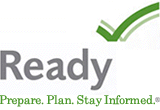Memorandum of Understanding & Mutual Aid Agreements

Mutual aid agreements and memoranda of understanding can effectively assist state and local governments, the aging services network, state and local public health, and emergency response officials in sharing information, data, supplies, resources, equipment, or personnel for the purpose of protecting vulnerable older adults in all-hazard emergencies.
Model Memorandums of Understanding
CDC Public Health Law Program
Support for the Emergency Management Assistance Compact (EMAC)
CDC Emergency Preparedness and Response
Below is a menu of suggested topics specific to vulnerable older adults for discussion and inclusion when drafting Memorandums Of Understandings between partners and in planning for this population. This tool can be used in conjunction with resources available from the Centers for Disease Control and Prevention’s Public Health Law Program [PDF–187K].
Partners
Identify the critical planning partners and essential parties to the MOU.
Consider:
Determine which entities are involved in addressing the needs of older adults during an emergency.
- Invite entities to create an MOU that addresses needs of vulnerable older adults.
- Determine which parties will be the signatories to the MOU.
All parties should be at the table to develop an MOU including:
- Area Agency on Aging.
- Local and state public health departments.
- Local and state mental health departments.
- Local emergency management.
- State unit on aging.
- Home healthcare providers.
- Visiting nurse associations.
- Tribal entities.
- Medical Reserve Corps (MRC).
- Community based organizations.
- Voluntary Organizations Active in Disaster (VOAD).
Incorporate input from members of the older adult community and invite their participation in the MOU planning meeting.
Definitions
Define and agree upon terms including specific description of vulnerable older adults to be beneficiary under the MOU.
Consider:
Define and agree upon the meaning of vulnerable older adults.
- Determine which older adults in the community might fit within the definition.
- Incorporate definitions of the types of physical, mental, and resource impairments that may make older adults vulnerable for purposes of the MOU.
Agree upon the types of emergencies or disasters covered under the MOU, or consider an all-hazards emergency approach.
Determine the ways in which different hazards affect vulnerable older adults differently than the general population?
Determine specific services that must be maintained in order to protect older adults.
Agree upon the specific needs of older adults that must be addressed.
Agree upon the roles of essential actors such as case managers.
Communication and Messaging
Include plans to develop communication strategies and messages for the older adult population.
Consider:
Determine who will develop communications and media messages tailored to older adults in the community.
Establish agreements with community based organizations (CBOs) and faith-based organizations (FBOs) to target older adult members with messaging.
Collaborate to develop and provide radio and TV spots aimed at older adult population.
Create agreements between public health and senior centers to facilitate vaccination programs and other public health services for older adults.
Sheltering
Discuss and include provisions that address sheltering vulnerable older adults.
Consider:
Determine who will be involved in assessing and selecting a sheltering facility and location which can accommodate older adults.
- Determine the lead agency in standing-up shelters in facilities and in locations which are appropriate for older adults.
- Agree upon a plan for how an assessment will include issues affecting older adults such as impaired mobility, vision or hearing impairment, or cognitive impairment.
Determine who will provide meals for vulnerable older adults.
- Specify who will provide meals appropriate for older adults such as low sodium meals.
- Determine and agree upon a process for identifying which older adults may need special meals due to conditions such as diabetes, high blood pressure, etc.
Determine who will organize and operate transportation to shelters for older adults, including those with mobility issues.
Determine who will procure and distribute specialized support materials such as adult diapers or nutritional supplements.
Agree upon training programs.
- Develop and conduct pre-event trainings in older adult issues for shelter staff and volunteers.
- Provide trainings to caregivers about advocating for older adults in a shelter environment.
Determine who will provide care for older adults’ mental and physical health.
- Provide a mental health professional in the shelter that specializes in unique mental health needs of older adults (dementia, confusion, isolation, depression) and can assess individuals.
- Provide access to AAA case workers and other social services organizations to provide on-going needs assessments in shelters to identify individual needs or case management services to address individual needs (physical and mental health).
- Outline a plan for procuring emergency prescriptions and delivery of regular medication to shelter.
Create agreements with local animal shelters to temporarily house and feed pets of older adults.
Create agreements with non-Red Cross shelters to input data into Federal National Shelter System.
Home-bound services
Discuss and define the party with responsibility for continuation of home-bound services to vulnerable older adults.
Consider:
Discuss and agree upon a plan that allows for continuation of meal delivery in homes for homebound older adults during emergencies.
Discuss and agree upon a plan that allows for delivery of water supplies to older adults who may be suffering from some type of functional impairment, and are therefore unable to carry their own water.
Relationship between the parties
Define and agree upon the specific parameters of the relationships between the parties to an MOU.
Consider:
Determine and agree upon information flow during pre-event and response
- Create a plan of who contacts whom; who initiates the process, and focus this plan on specific positions as opposed to certain individual people.
Agree upon what information will be shared and whether there are jurisdiction specific restrictions.
- Discuss HIPAA compliance and state confidentiality laws. Determine applicability, and set up procedures for sharing information in times of need, such as obtaining consent from individuals before an event occurs.
Agree upon and create simple operating procedures as a one page addendum
- Include “the who, the when, and the how” so that during response this document can be easily accessed, understood, and implemented.
All parties to an MOU should agree to meet and review MOU on a yearly basis, and to update information to all parties as needed throughout the year.
If possible agree upon the specific request for assistance prior to an event (what you need, where you need it).
Agree upon response time for requests for assistance
Include a provision about testing the MOU as part of regular exercises.
Volunteers
Identify and Resolve Issues around Volunteers.
Consider:
Create and agree upon requirements for background checks of volunteers and others working with vulnerable older adults.
Provide pre-event trainings to volunteers on older adult needs and issues.
Develop agreements and plans for recruitment.
Consider licensing issues for volunteers when appropriate.
Agree to create and share registries of volunteers trained on older adult needs.
Determine and agree upon how and when volunteers will be deployed and managed during an event.
Agree upon how volunteer activity will be recorded for funding matching purposes.
Develop and agree upon expectations for volunteers about the jobs being done and volunteer behavior.
Determine who directs and controls volunteer actions.
- Determine the immediate supervisor of volunteers and include clear professional supervision for medical orders.
- Consider whether medical personnel aware that volunteers are acting under their medical orders.
Develop and agree upon method for handling cross-organizational disputes.
Agree to communicate, coordinate, collaborate.
Suggested Topics also available in PDF [PDF–105K]
- Page last reviewed: November 26, 2012
- Page last updated: November 26, 2012
- Content source:


 ShareCompartir
ShareCompartir

